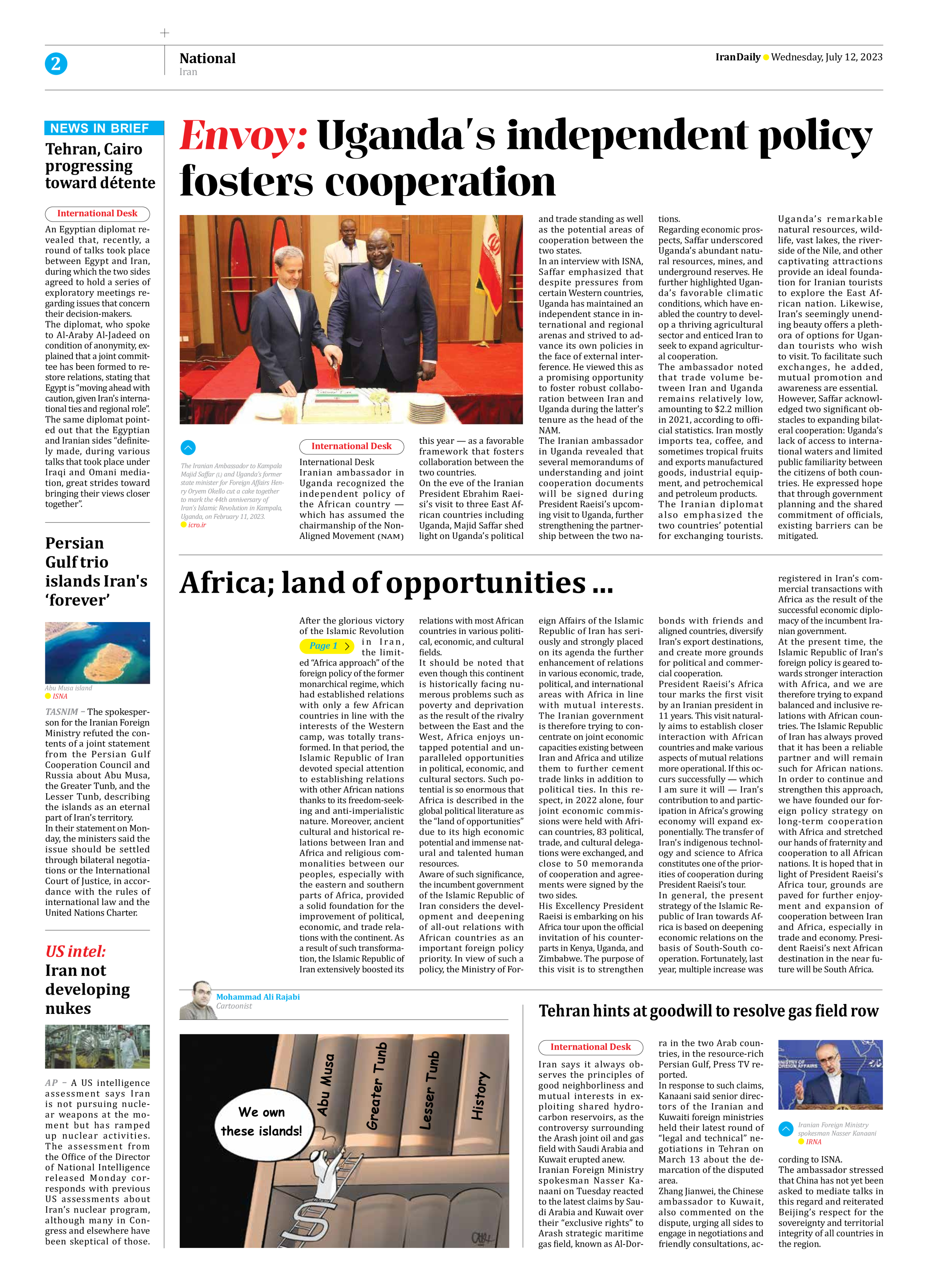
Envoy: Uganda’s independent policy fosters cooperation
International Desk
Iranian ambassador in Uganda recognized the independent policy of the African country — which has assumed the chairmanship of the Non-Aligned Movement (NAM) this year — as a favorable framework that fosters collaboration between the two countries.
On the eve of the Iranian President Ebrahim Raeisi’s visit to three East African countries including Uganda, Majid Saffar shed light on Uganda’s political and trade standing as well as the potential areas of cooperation between the two states.
In an interview with ISNA, Saffar emphasized that despite pressures from certain Western countries, Uganda has maintained an independent stance in international and regional arenas and strived to advance its own policies in the face of external interference. He viewed this as a promising opportunity to foster robust collaboration between Iran and Uganda during the latter’s tenure as the head of the NAM.
The Iranian ambassador in Uganda revealed that several memorandums of understanding and joint cooperation documents will be signed during President Raeisi’s upcoming visit to Uganda, further strengthening the partnership between the two nations.
Regarding economic prospects, Saffar underscored Uganda’s abundant natural resources, mines, and underground reserves. He further highlighted Uganda’s favorable climatic conditions, which have enabled the country to develop a thriving agricultural sector and enticed Iran to seek to expand agricultural cooperation.
The ambassador noted that trade volume between Iran and Uganda remains relatively low, amounting to $2.2 million in 2021, according to official statistics. Iran mostly imports tea, coffee, and sometimes tropical fruits and exports manufactured goods, industrial equipment, and petrochemical and petroleum products.
The Iranian diplomat also emphasized the two countries’ potential for exchanging tourists. Uganda’s remarkable natural resources, wildlife, vast lakes, the riverside of the Nile, and other captivating attractions provide an ideal foundation for Iranian tourists to explore the East African nation. Likewise, Iran’s seemingly unending beauty offers a plethora of options for Ugandan tourists who wish to visit. To facilitate such exchanges, he added, mutual promotion and awareness are essential.
However, Saffar acknowledged two significant obstacles to expanding bilateral cooperation: Uganda’s lack of access to international waters and limited public familiarity between the citizens of both countries. He expressed hope that through government planning and the shared commitment of officials, existing barriers can be mitigated.







